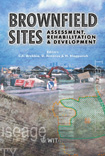A Flexible Object-oriented Software Framework For Developing Complex Multimedia Simulations
Price
Free (open access)
Transaction
Volume
55
Pages
Published
2002
Size
729 kb
Paper DOI
10.2495/BF020361
Copyright
WIT Press
Author(s)
P. J. Sydelko, J. E. Dolph & J. H. Christiansen
Abstract
A flexible object-oriented software framework for developing complex multimedia simulations P.J. Sydelko, J. E. Dolph & J. H. Christiansen Decision and Information Sciences Division, Argonne National Laboratory, USA Abstract Decision makers involved in brownfields redevelopment and long-term stewardship must consider environmental conditions, future-use potential, site ownership, area infrastructure, funding resources, cost recovery, regulations, risk and liability management, community relations, and expected return on investment in a comprehensive and integrated fashion to achieve desired results. Successful brownfields redevelopment requires the ability to assess the impacts of redevelopment options on multiple interrelated aspects of the ecosystem, both natural and societal. The Dynamic Information Architecture System (DIAS) is a flexible, extensible, object-oriented framework for developing and maintaining complex multidisciplinary simulations of a wide variety of application domains. The modeling domain of a specific DIAS-based simulation is determined by (1) software objects that represent the real-world entities that comprise the problem space (atmosphere, watershed, human), and (2) simulation models and other data processing applications that express the dynamic behaviors of the domain entities. Models and applications used to express dynamic behaviors can be either internal or external to DIAS, including existing legacy models written in various languages (FORTRAN, C, etc.). The ability to simulate the complex interplay of multimedia processes makes DIAS a promising tool for constructing applications for comprehensive community planning, including the assessment of multiple development and redevelopment scenarios.
Keywords




